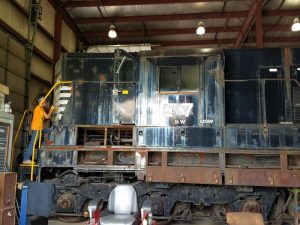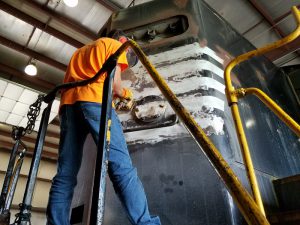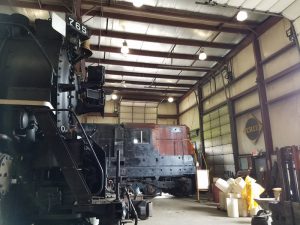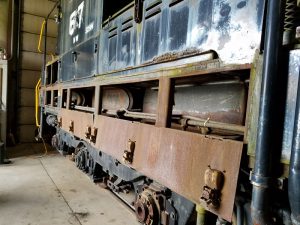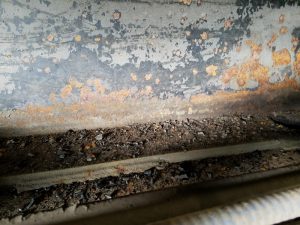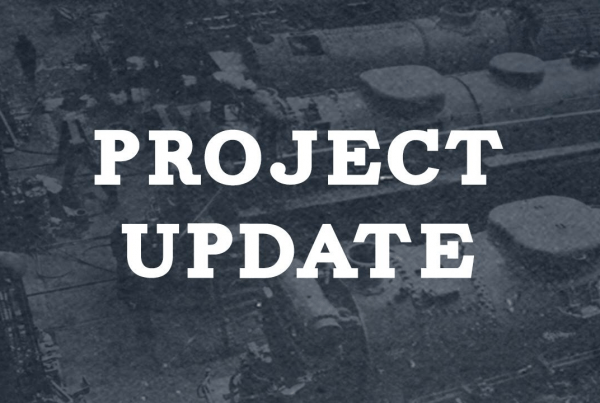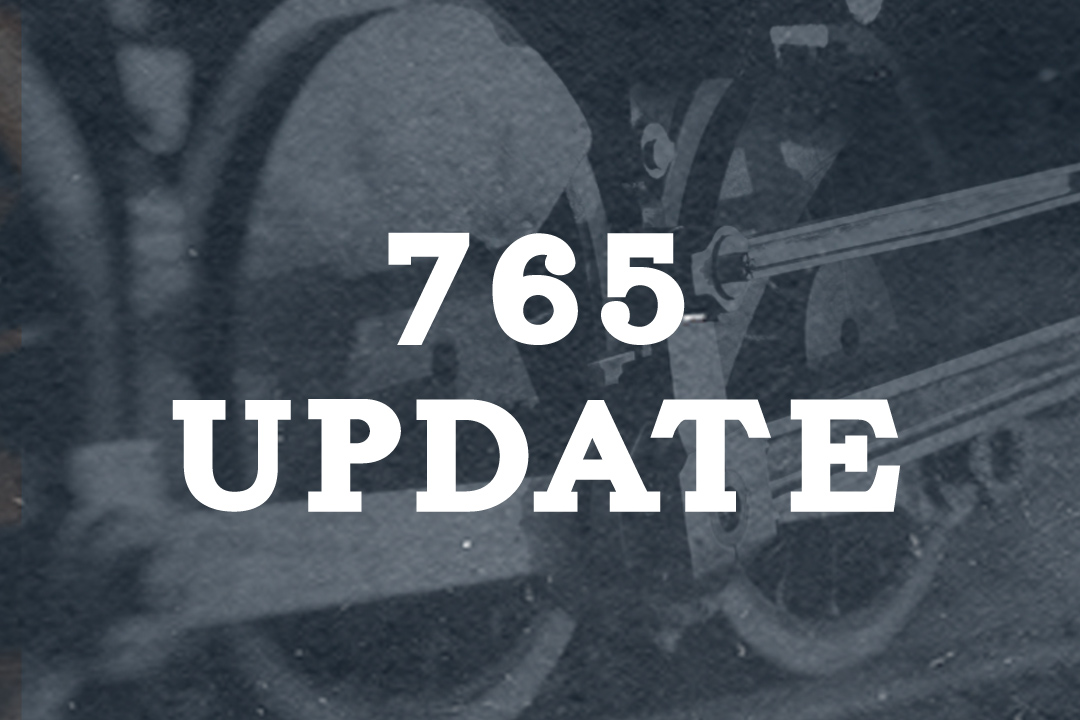Submitted by WD Miller.Carson and I spent 9 hours on 358 Friday, July 14th.
358 has been inside the shop for a couple of weeks, and it has really helped with cleaning up the locomotive as it has dried up.
Work first started with the rear drain. Brought a pipe snake in to try to open the drain pipe from the sump. Using shop vac swept up a lot of loose debris that was dried, and tried to pull as much out of the drain pipe from the top side as possible. Was having trouble at first on the top side with the snake, decided to work bottom up. Was able to get 4-5 feet of the snake into the pipe from the bottom, removed a wad of paper, and some tree leaves. Ran the snake in as far as I could, but kept hitting something about 5 feet in. Ran shop vac from the top again, and this time was able to extract a large bolt…OK that’s a good start. The pipe was opened up a bit, still wet throughout mostly. But could hear and feel vacuum on the pipe. I think it dries a bit more and I bring a different snake I can get it opened up even more. If not, some high pressure air and/or water maybe needed.
The Fireman’s side sill was knocked loose and swept up completely. Creating about 5 full loads in the shop vac just from that side. Again, having a dry locomotive made it extremely easy to pull dirt out. The rear fireman side steps were swept and cleared. There is a huge void where the main frame meets what I’ll call the pilot end-frame, there literally is / was inches of dirt and debris packed in this area. I did the best I could to clear it out, but it’s very difficult to get into that area. So it may just have to be picked away at as time allows. I did pull two large chunks of dirt out, that I honestly think the bottom part of it could be from 1957, it looked different than all the other stacked on top.
The engineer’s side sill was finished as well with shop vac. This side is much more difficult and time consuming with the cables and piping that is on this side of the locomotive. Probably got 90% of the dirt and debris out, but could use a high pressure shot of air to just blast the rest of it out, this would probably be best done outside.
I would think that both sills could use some spot needling, and maybe a wire wheel touch on the back side of all the doors, and then apply a decent sealant, whether it’s flex seal, undercoat, or just primer. Something to slow or stop the rusting process.
Carson spent most of his time working on the short hood, fireman’s side. Sanding down the paint and stripes to nearly bare metal. Once Carson got it to a point he was happy, he rattle canned it with some black to just protect it for now until the final coat is ready to go on.
We looked at the front headlight, but could not do any more, plus was getting late.
Also discussed some ideas for fund raising. “358 Builders Plate Level” and the “Reverser Level” of fundraising. We’re looking for a good way to have replica EMD builder plates produced, ones that we can customize a bit, but yet keep that EMD look. Charge $358 for the custom plate. The “Reverser” level of funding would be for a lot more $1,000 or more donation, get an engraved brass reverser and cab/throttle time at an open house later when she is revealed as NKP 358. (Another idea that I have to explore is a glass piece with the builders photo on it, a place just outside of Ottoville does some fantastic stuff with glass, I’ll send a sample in a bit.)
We have a few more dates prior to the open house to get more done. If it remains inside and dry, the main sump under the block will be the primary target. A quick look at it revealed that it’s perfect condition to make quick work of it while it’s dry.
Any member who wishes to volunteer their time or make a donation towards the restoration of NKP 358 may contact Project Manager Chris Lantz at lantz@fwrhs.org .

